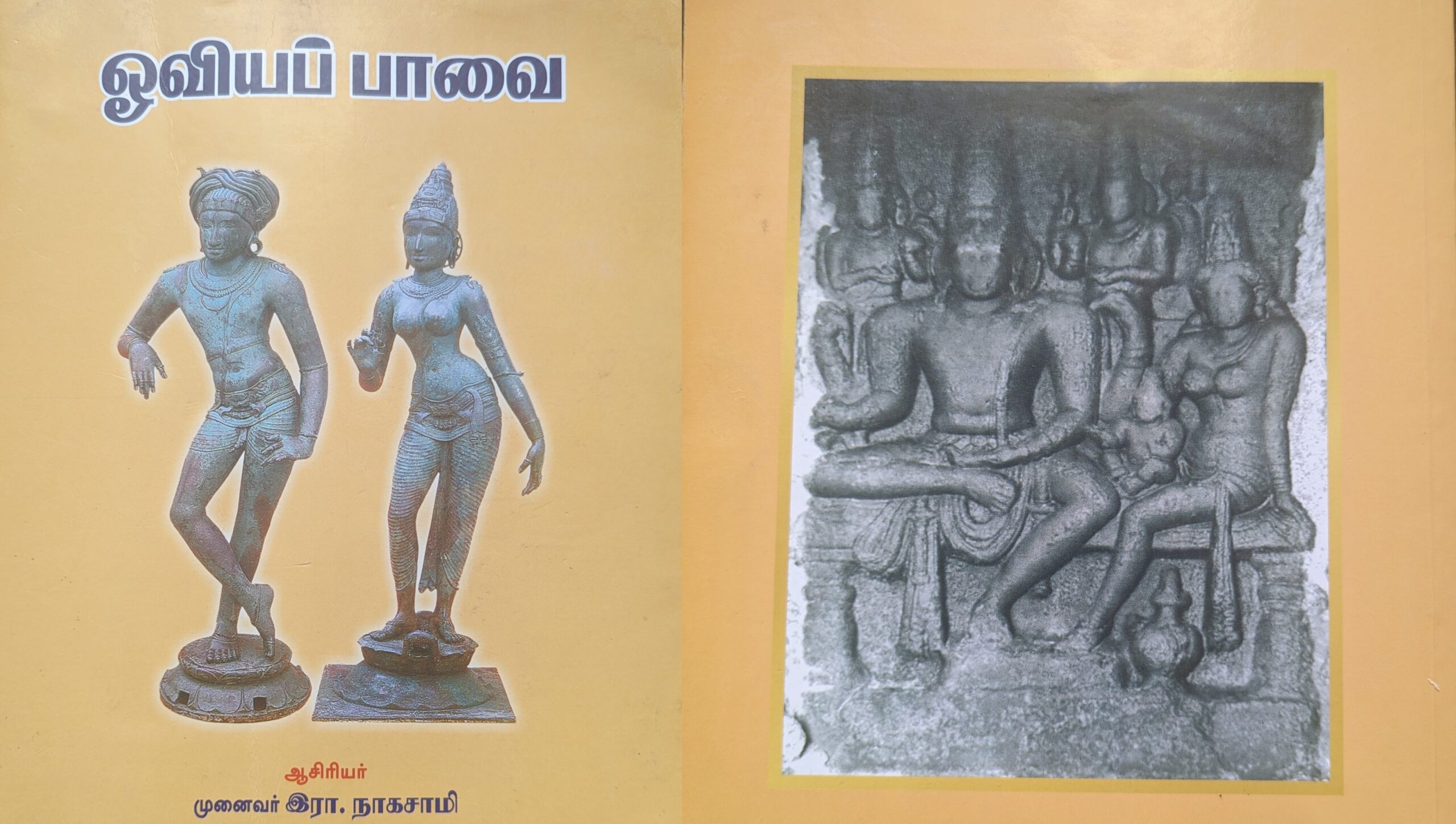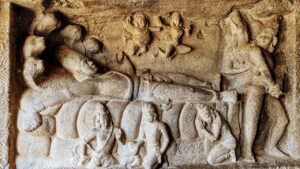Dr R Nagaswamy's work should be on the bookshelf of every lover of art and art history

The front and back covers of R Nagaswamy's Oviyappavai. On the front cover is a Rishabhantika bronze (now in Thanjavur museum); on the back cover is a Somaskanda from Mamallapuram
Oviyappaavai (ஓவியப் பாவை) was first published in 1979, and another edition came out recently. Authored by Dr R Nagaswamy, the doyen of Tamil Nadu archaeology who passed away last year, it is one of the finest books in Tamil about art in temples — mainly sculptures, paintings, and bronzes.
The book fills a glaring void in cultural education and is a tour de force of the art of Tamil Nadu from the sixth century to recent times.

Anantashayana, Mamallapuram (part of what is now called the Mahishasuramardini Mandapa) (Prasanna RS)
The author’s remarkably chaste Tamil prose, in fluent phrase and flowery idiom, gives a marvellous literary flavour to the book.
He uses phrases from the Divya Prabhandam of the Azhwars and Thevaram of the Nayanmars to describe the marvels wrought by ancient sculptors. How poetry and music inspired beauty and suggestion (bhava), he describes in one chapter after another.
For example, he calls Anantashayana “Kadalmallai kidanda karumbu” (கடல்மல்லைக் கிடந்த கரும்பு), the phrase used by Tirumangai Azhwar, and Mahisharura Mardhini “Maamayidar Serrugunda Kolatthal” (மாமயிடற் செற்றுகந்த கோலத்தாள்), a phrase used by Ilango in Silappadikaaram. How mellifluous they sound, even in translation — “Sweet Vishnu stretching upon the Mallai seashore” and “Dainty Damsel who vanquished Mighty Mahisha”.
The detailed descriptions of sculptures in Mamallapuram (also Mallai or Mahabalipuram) would inspire any art lover to visit it again, book in hand, and soak in the elegance and aesthetic splendour of the Pallava era.
He waxes lyrically about the sculptures of Kanchi Kailasanatha and Vaikunta Perumal temples, the Kumbakonam Nageshwaran temple, and Kazhugumalai.
The sculptures of apsaras in Nageshwaran temple are beautifully explained with stanzas from Sanskrit literature such as the poems of Kalidasa.
Nagaswamy integrates a heart-rending local legend of a young sculptor about Vettuvankovil in Kazhugumalai to elucidate the splendour of Pandya sculpture.
A chapter titled Oviyappaavai ((ஓவியப் பாவை, a phrase coined by poet Kamban) discusses the paintings in Kanchi Kailasanatha, Sittannavasal, and Thanjavur Brihadeeshwara. He calls these Ajanta in Tamil Nadu.
The author’s most eloquent and adoring prose is reserved for the grand murals commissioned by Rajaraja Chola in Thanjavur, lost and rediscovered only in the early 20th century.
The chapter on bronzes brings forth the author’s personal experiences and knowledge of inscriptions and history. He explains the lost wax process used to cast the bronzes and quotes the Sangam-era Aganaanooru and Pallava inscriptions to trace the antiquity of the art.
R Nagaswamy explains art reached its peak in the Chola era, with several outstanding examples from Tiruvenkadu and Melaperumpallam.
The book also has chapters on ivory (often in museums), wood (in temple doors and temple chariots) and terracotta sculptures, usually found only in village temples. They give it a completeness that few other books do.
Oviyappaavai is not that well known to the general public, but it should be on the bookshelf of every lover of art and art history. One hopes this book is translated into other languages too so that all Indians may enjoy the glory of Indian art.
(R Gopu is part of the Tamil Heritage Trust, or THT, and is interested in history and heritage. He is also one of the co-founders of the Varahamihira Science Forum)

Feb 18, 2024

Aug 07, 2023

Apr 30, 2023

Mar 23, 2023

Mar 23, 2023

Mar 22, 2023